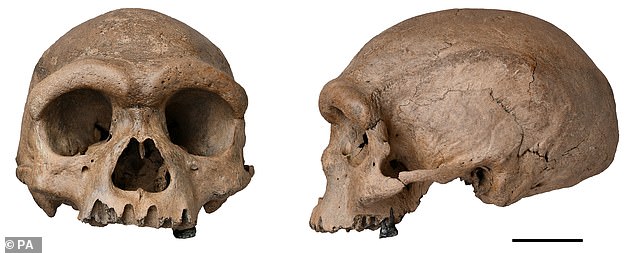
Dragon Man Skull Unveiled: 217,000-Year-Old Discovery Reveals Lost Human Lineage
Mystery of ‘Dragon Man’ Skull Solved: First Confirmed Denisovan Skull Revealed
[Image: Dragon Man skull with caption: The 146,000-year-old Dragon Man skull, now identified as Denisovan.]
For decades, the origins of the enigmatic "Dragon Man" skull puzzled scientists. Discovered in 1933 by a Chinese laborer near Harbin City during Japanese occupation, the fossil was hidden in a well for 85 years before being donated to researchers in 2018. Now, DNA analysis has confirmed it belonged to the Denisovans—a mysterious group of ancient humans.
Breakthrough Through Dental Plaque
Initially dubbed Homo longi (Dragon Man), the skull’s thick brow, large eye sockets, and massive cranium suggested it was neither Homo sapiens nor Neanderthal. To solve the puzzle, scientists extracted DNA from mineralized plaque on its teeth, which preserved traces of oral cells. This genetic material matched DNA from Denisovan finger bones found in Siberia’s Denisova Cave in 2010.
[Image: Close-up of tooth plaque with caption: DNA from 146,000-year-old dental plaque linked the skull to Denisovans.]
The discovery marks the first confirmed Denisovan skull, offering unprecedented insights into their appearance. “We finally have a face for these enigmatic ancestors,” said Dr. Bence Viola, a paleoanthropologist at the University of Toronto.
Who Were the Denisovans?
Emerging around 217,000 years ago, Denisovans were a sister species to Neanderthals. They interbred with early modern humans, leaving traces of DNA in populations across Asia and Oceania. Until now, only tiny bone fragments and teeth provided clues to their existence. The Dragon Man skull reveals they were robust, large-brained humans adapted to harsh climates.
[Image: Reconstruction of Denisovan face with caption: Artist’s impression based on the skull: Denisovans had heavy brows, wide mouths, and broad noses.]
A Glimpse into Denisovan Life
Dragon Man’s skull suggests a brain 7% larger than modern humans. Reconstructions depict a stocky, broad-faced hunter-gatherer, likely thriving in Ice Age China. However, Denisovans’ wide-ranging habitats—from Siberia to Southeast Asia—hint at diverse physical traits. “They may have varied as much as modern humans do today,” noted Prof. John Hawks of the University of Wisconsin–Madison.
[Image: Map of Denisovan sites with caption: Denisovan remains have been found across Asia, suggesting a vast geographic range.]
Unsolved Mysteries
While the skull confirms Denisovans were large-bodied, questions remain about their cultural and technological capabilities. Previous finds in Denisova Cave included bone tools and jewelry, but it’s unclear if they crafted these artifacts. Ongoing research aims to unravel their adaptability and interactions with other hominins.
A Legacy in Our Genes
Today, up to 5% of Indigenous Australasians’ DNA is Denisovan, a legacy of ancient interbreeding. The Dragon Man specimen, dating to 146,000 years ago, represents an early lineage distinct from later Denisovans who mixed with Homo sapiens around 50,000 years ago.
[Image: DNA helix with caption: Modern humans carry Denisovan DNA, especially in Pacific Island and East Asian populations.]
Why It Matters
This breakthrough reshapes understanding of human evolution. “Dragon Man highlights the complexity of our ancestry,” Dr. Viola emphasized. As the oldest large hominin skull in Asia, it underscores Denisovans’ role as key players in prehistory—survivors who left an indelible mark on humanity’s genetic blueprint.
Word count: ~600


